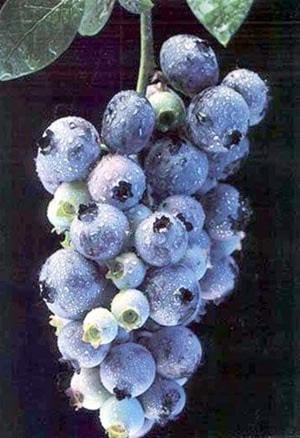In the new world of carbon footprints, isn’t it nice to know gardening is one of the best investments you can make for the environment, for flavour and for your pocketbook? Just consider the small cost of perennial vegetables and small fruit bushes along side the almost instant return they provide.
Many folks are under the impression that perennial vegetables and small fruits are difficult to grow and require a great deal of maintenance. Well, compared to fruit trees, they take amazingly little care. Rhubarb, horseradish and asparagus take little space and once mature, can be harvested easily for many years. All that’s required is a little top dressing of manure each spring. If you have never tasted fresh rhubarb pie, spicy horseradish on roast beef or some delightful asparagus spears with cheese sauce, you have missed something really special!
Jerusalem artichokes are perhaps the least known of the small fruits. The tubers can be planted in fall or spring and left in the ground all year. As a matter of fact, they overwinter better outdoors. These tubers have a sweet, nut-like flavour and are great for salads and soups, or as a substitute for potatoes. They’re truly delicious! They grow like sunflowers, and often you’ll get the added bonus of lovely flowers and seeds.
The wet spring weather over the past few years has caused mildew problems for both currants and gooseberries, but many newer varieties have come along to solve this problem. The ‘Red Cherry’ currant, the ‘Black Consort’ currant and from Finland, the ‘Hinnonmaecki’ gooseberry are all mildew resistant. ‘Black Consort’, by the way, has delightfully fragrant yellow flowers, making it a welcome addition to the landscape. Compared to other gooseberries, the ‘Hinnonmaecki’ is much less troublesome, and the berries are large.
Blueberries are certainly my favourite small fruit for many reasons. Two year old plants will start producing almost the same year you plant them and will continue to increase production almost indefinitely. If you select early, mid-season and late varieties, the berries can be harvested over a long period of time, and they are easy to freeze for a special treat in winter. The East Coast low bush varieties, like ‘Brunswick’, produce some of the sweetest berries you’ll find on very compact plants. ‘Chandler’ and ‘Darrow’ have enormous, delicious berries that are almost the size of the long gone Canadian 50¢ coin! The hot new trend today is to use blueberries anywhere in the landscape as great ornamentals. They have attractive flowers in spring, gorgeous fall colours and a nice twiggy look in winter. The new varieties ‘Sunshine Blue’ and ‘Legacy’ are evergreen in mild winters.
Vine berries are ideal in today’s gardens, especially if you have an empty fence or bare wall. Thornless boysenberries, loganberries, blackberries and even the huge new tayberries need just a little support and sunshine to give you an almost continuous supply of delicious berries. They can be kept quite confined in space, especially if you espalier them. Trained against a fence or wall, these vines look very attractive.
Speaking of vines, grapes have really take off as a home garden favourite, especially with the many seedless varieties available, like ‘Canadice’, ‘Flame’ and ‘Sovereign Charter’. They can be trained along old fences or up over sundecks to double as valuable shade plants. The first ever purple-leafed grape is now available. It produces big, juicy blue fruits.
Kiwis have certainly made their presence known in the Pacific Northwest. Although most folks grow the big fuzzy varieties, the hardy, grape-sized fruits of the ‘Ananasnaja’ variety are far easier to grow, and self-fertile varieties like ‘Issai’ will produce lots of delectable fruit with little care. The unique variety ‘Kolomitka’ has green foliage that turns white, then pink with a most spectacular display. The male plants are the most attractive, but when you have a female you get fruit and fabulous colour all summer.
Now is a great time to plant small fruits. They’re not only an investment in flavour and freshness, but many of them also have delightful ornamental features. Small fruits are easy to grow and add a flavourful taste to any garden.
